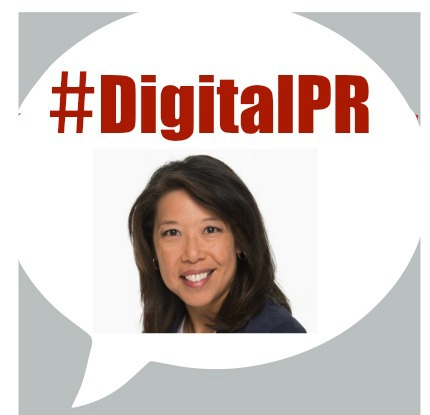
Here is the transcript of the #DigitalPR chat on Friday March 11, 2016. My guest was Victoria Lim, visual content expert and the Social Media and Content Editor for Walt Disney World.
Q1: The Track Maven study showed that while content publication and distribution from brands and companies is up by 35% engagement is decreasing. How can visual content help with engagement?

A2: Visuals can compel and evoke. Compel you to want to learn more, comment and share. Evoke emotions that compel you to ask questions and engage. That’s why “caption this” posts are still popular. While we only remember about 10% of what we read, we retain 80% of what we see.
Q2: Only 7% of marketers feel confident about their current visual content (Source: Curulate.) How can they do better? How can marketers and PR pros improve their visual content?
A2: They do say “a picture is worth a thousand words;” but in many cases the photos are worth only two words: “not interested.” For instance, when people share articles on their Facebook feeds and the default image is the media outlet’s logo instead of an image that actually is relevant to the story.
I see thumbnails associated with stories that are so generic or puzzling, it certainly doesn’t seem to compel or evoke me to click. I’m NOT saying to always go for shock and awe especially if it’s not appropriate or relevant. That would be like writing a story headline that has nothing to do with the content of the story but is just clickbait based on whatever Google Trends is saying is out there.
But I am saying think about what image (this also goes for video and infographics) will make you want to click, follow, comment, share, etc.
How to improve visual content? The first question to answer: What is the story? The story can be an announcement, an event, a milestone, a ticket special, a new product – not just a photo or image that makes you “feel good” – it can be a call-to-action (CTA.) But it has to be relevant to the story.
The image has to connect people. PEOPLE CARE ABOUT PEOPLE. Ask yourself ‘how does this new event, product, announcement impact my life? your life? your family’s life?’ Show that visually.
Q3: How do you know what kind of visuals to create? What will resonate and get engagement?
A3: What’s the platform? What’s the story? What’s the subject? Sorry – no easy answer for this one. You need to answer questions like Where are you posting it, who are you trying to reach, what’s your message, what’s the subject of the visual, is there a CTA, etc.
Example: if you are a company that makes a product to filter water why not show someone enjoying a glass of water instead? The caption/cutline/text provides context. Everyone can relate to drinking refreshing water!

Q4: “A good visual extends and enhances the story.” Please explain what that means.
A4: We’re all familiar with the war in Syria, yes? It’s killed more than a quarter million people. 80,000 civilians are dead, so are 13,500 children. Do you care? Have you been moved to read this story FIRST, over any others? But when this photo was published, there was a surge of outcry.

Visuals are sometimes a mirror of sorts – viewers see themselves, potential selves, someone(s) they care about. Good visuals connect. Some kind of stirring happens within – happy, surprised, angry, tragic – visuals evoke and compel a response.
Q5: Why are visuals important when pitching the media?
A5: News media need visuals to do their job – to inform the public. Even if they’re a “print” outlet. No news media outlet is just one platform. Everyone has a website, has social media. Everyone needs visuals today. As PR professionals, don’t we want our stories out there? What better way than to provide your photos/video to the media? And especially now that the news media has to do more coverage on more platforms with less people. Help them out by supplying excellent visuals.
Q6: Which works better – images or video? Or can one generalize?
A6: What tells the story better? Think like a journalist. Video of a meeting can be zzzz. But a photo that captures the emotion of something that’s said/shared, that is better. A story about a concert can use a photo of the performer. But why not share video of the song/act/spectacular? A photo of a smiling baby is adorable. Video of a baby giggling – c’mon! That’s way better.
Every asset – text, photo, visual, infographic – should be thoughtful. Should be strategic. Every asset you share for PR should be reviewed with a critical eye. Why are we sharing this? Who will use it?
Q7: How should we be measuring the impact of our visuals?
A7: What’s the goal? Is it likes? Shares? Comments? CTA? Success of a visual depends on the goal. Most platforms – especially social ones – have analytic tools that can tell you basic info about impact.
If anyone has more Qs, please tweet me. @VictoriaLim
This week’s guest on the #DigitalPR chat is Alicia Whalen of Hashtagio. Follow her @Alicia_Whalen
We’ll be doing a Q&A on the value of visual social hubs and sharing some case studies. Join us on Friday at 10 am P 1 pm E.

